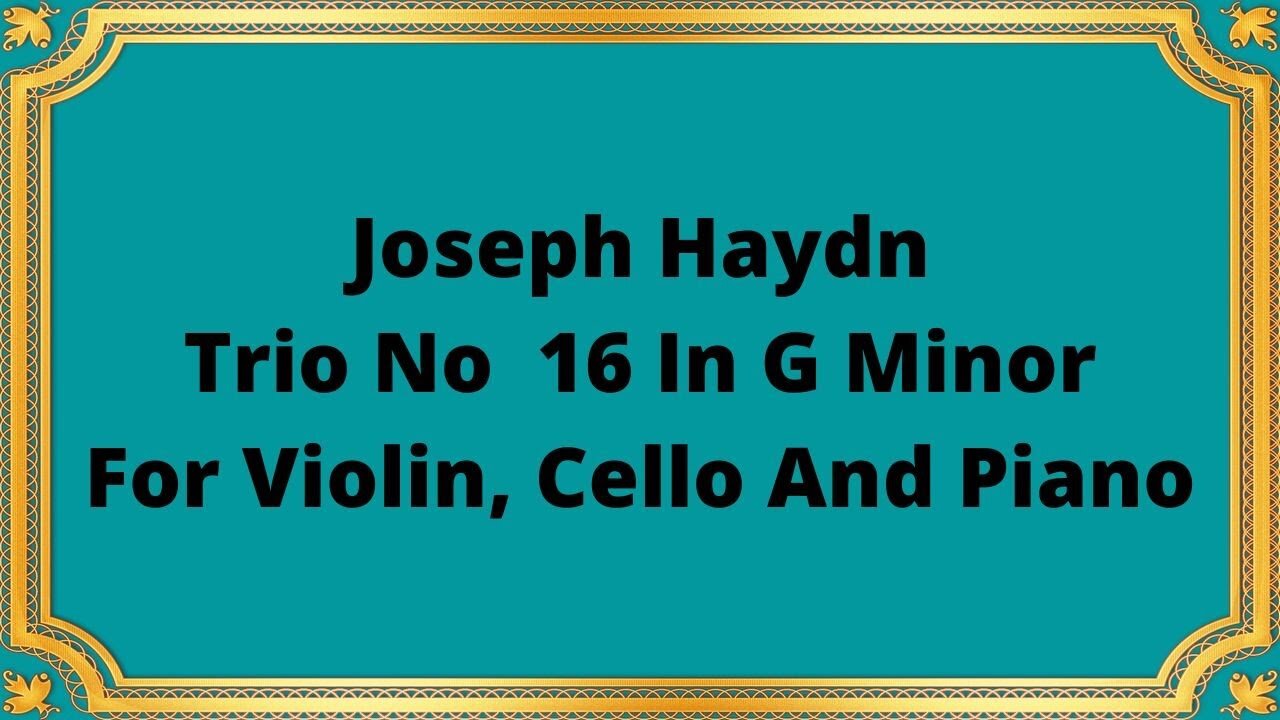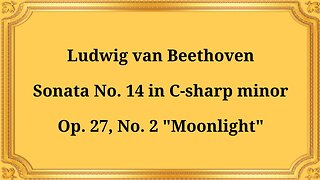Premium Only Content

Joseph Haydn Trio No 16 In G Minor For Violin, Cello And Piano
#classicalmusic #JosephHaydn #TrioNo16 #GMinor #Violin #Cello #Piano #MusicalComposition #HaydnTrio #ClassicalComposers #MusicHistory #ClassicalEnsemble #ChamberMusic #HaydnInfluence #HaydnLegacy #MusicPerformance #HaydnTrioNo16
Publication date 1955
JEAN FOURNIER, Vion
ANTONIO JANIGRO, celo
PAUL BADURA-SKODA, Piano
The world of classical music is adorned with countless masterpieces, each holding its unique charm and significance. Among these treasures is Joseph Haydn's Trio No. 16 in G Minor for Violin, Cello, and Piano. Composed during the late 18th century, this piece showcases Haydn's exceptional talent and artistry.
Joseph Haydn, an Austrian composer widely regarded as the "Father of the Symphony," wrote Trio No. 16 in G Minor during his later years. This period, known as the Classical era, witnessed a shift in musical style from the elaborate Baroque to a more balanced and structured approach. Haydn, along with his contemporaries Mozart and Beethoven, played a pivotal role in shaping this new musical landscape.
Trio No. 16 in G Minor is a prime example of Haydn's expertise in chamber music. It consists of four movements – Allegro moderato, Menuetto, Adagio, and Finale: Presto. The opening Allegro moderato sets the tone with its dramatic and melancholic melodies, showcasing Haydn's ability to evoke emotions through music. The Menuetto, a lively and rhythmic dance-like movement, provides a refreshing contrast. The Adagio is a serene and introspective movement, allowing the listener to experience moments of tranquility. The Finale: Presto concludes the piece with its lively and energetic character, leaving a lasting impression.
Haydn's Trio No. 16 demonstrates a remarkable balance between the three instruments – the violin, cello, and piano. Each instrument has its distinct voice and plays an integral role in developing the musical narrative. The violin takes on the melodic lead, while the cello provides a rich and grounding bassline. The piano acts as both a harmonic support and a soloistic instrument, showcasing Haydn's mastery of writing for the keyboard.
Haydn's Trio No. 16 in G Minor has stood the test of time, continuing to captivate audiences and musicians alike. Its emotional depth, technical brilliance, and impeccable compositional structure have solidified its place as a cornerstone of the chamber music repertoire. This composition serves as a testament to Haydn's genius and his contribution to the development of classical music.
Conclusion:
Joseph Haydn's Trio No. 16 in G Minor for Violin, Cello, and Piano exemplifies the brilliance and artistry of the composer. With its rich musical tapestry, emotional range, and exquisite craftsmanship, this piece continues to inspire and enchant listeners to this day. Its historical significance and enduring legacy make it a true masterpiece of classical chamber music, deserving of recognition and appreciation for generations to come.
You have the opportunity to support the channel:
https://destream.net/live/RadSiarAl/donate
https://www.buymeacoffee.com/6355radsiaral
-
 18:26
18:26
Classical music_Music Inspiration
1 month agoLudwig van Beethoven Sonata No. 14 in C-sharp minor, Op. 27, No. 2 "Moonlight"
811 -
 LIVE
LIVE
Rebel News
46 minutes agoNo trade deal for Carney, Christian cancelled in BC Bible Belt, Liberal bail reform | Rebel Roundup
314 watching -
 UPCOMING
UPCOMING
The Drew Allen Show on DailyClout
24 minutes ago"Russiagate Is ‘Crime of the Century’"
-
 1:20:41
1:20:41
Steven Crowder
3 hours agoBill Burr Flames Out on Conservatives, Whites, and... Ben Shapiro
132K74 -
 56:58
56:58
The Rubin Report
2 hours agoHow to Protect Yourself from Toxic Beliefs | Eckhart Tolle
27.7K20 -
 LIVE
LIVE
The Mel K Show
1 hour agoMORNINGS WITH MEL K -Collateral Consequences of The Russia Hoax Must Be Addressed! 8-1-25
1,030 watching -
 LIVE
LIVE
Film Threat
16 hours agoTHE NAKED GUN BLOWS COMEDY | Film Threat Livecast
159 watching -
 LIVE
LIVE
Flyover Conservatives
12 hours agoAVOID BURNOUT: Why You Must View Your Work As Worship - Clay Clark | FOC Show
281 watching -
 36:09
36:09
Rethinking the Dollar
2 hours agoU.S. Job Market Fails—Real Talk on Gold, Ray Dalio & World ID | Morning Check-In
2.27K3 -
 LIVE
LIVE
JuicyJohns
4 hours ago $1.96 earned🟢#1 REBIRTH PLAYER 10.2+ KD🟢$500 GIVEAWAY SATURDAY!
153 watching